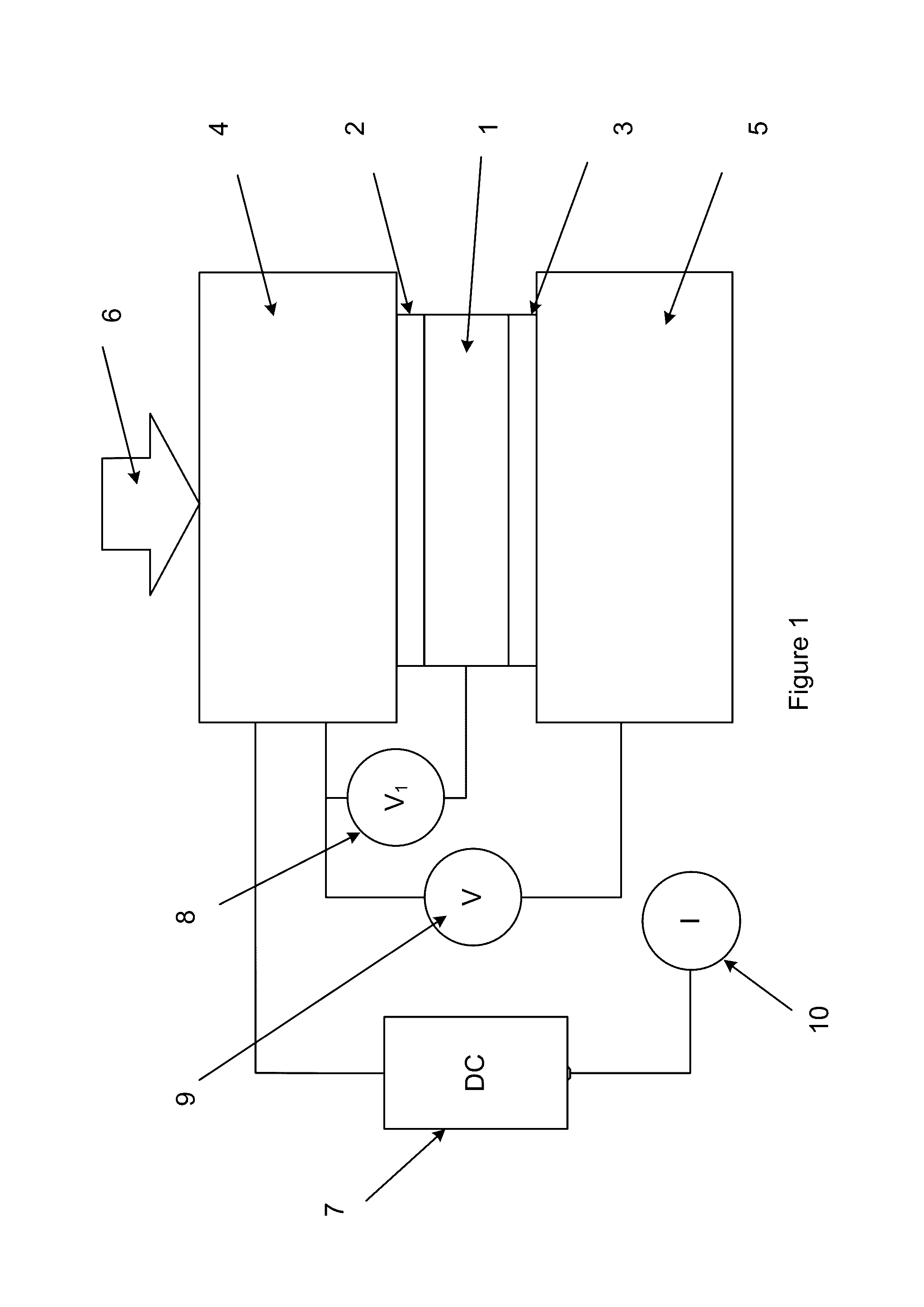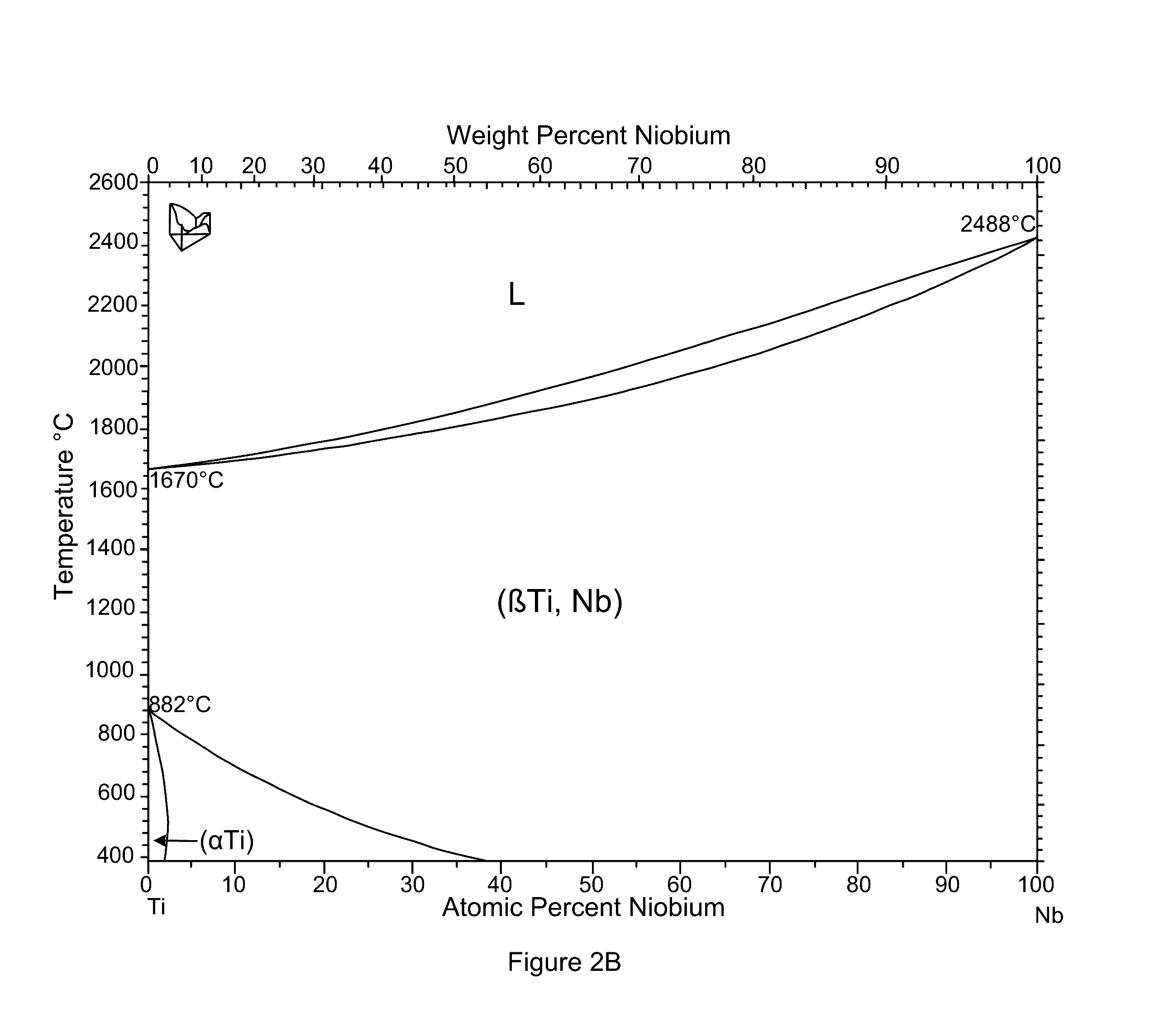Method of metallic component surface modification for electrochemical applications
a technology of metallic components and surface modification, applied in the direction of metallic material coating process, solid state diffusion coating, fuel cell details, etc., can solve the problems of high internal energy loss of electrolysis cells, components exposed to high electrochemical potential, and surface oxide layer is not electrically conductive, and achieves low electrical contact resistance
- Summary
- Abstract
- Description
- Claims
- Application Information
AI Technical Summary
Benefits of technology
Problems solved by technology
Method used
Image
Examples
example 1
[0091]A commercial pure titanium foil was selected for the surface modification to achieve the low electrical surface contact resistance. A 3 cm×5 cm titanium foil was soaked in 50 ml 1.5 wt % hydrofluoric acid solution for about 2 hours at room temperature. At first, the hydrofluoric acid etched off the native oxide surface layer of titanium. Then, it continually etched the metallic portion of titanium foil. During the etching process, hydrofluoric acid was consumed; its concentration was continually decreased and the etching rate of titanium in the depleted hydrofluoric acid solution was reduced.
[0092]The etching process converted the morphology of the flat titanium surface to small peaks. FIG. 6 is a SEM picture of the etched titanium surface at a 52° viewing angle. It includes large amount of small peaks that have a sharp top. Some of the peaks are in a thin sheet shape that has the width between 50-100 nm. Some peaks has the diameter of 50-100 nm. The height of the peaks is bet...
example 2
[0095]A 316L stainless steel foil was used as the substrate. Commercial pure titanium was deposited on the surface by a cathodic arc process (CA-Ti-SS). Cathodic arc is an industrial coating process that can melt titanium target surface and blast melted titanium droplets to the substrate, along with titanium vapor. The titanium vapor and droplets are deposited on the stainless steel substrate surface. The vapor coats the stainless steel surface with titanium and the droplets forms small round titanium peaks on the coated surface. FIG. 7 is a SEM picture at a 52° viewing angle of the 316L stainless steel foil with large amount of round titanium peaks. The thickness of the Ti coating on stainless steel is 0.5-2 μm. The diameter of the peaks is between 0.5 and 10 microns. The height of the peaks is between 0.5 and 15 microns. The distribution density of the peaks is estimated of 1-10 million / cm2.
[0096]In comparison, the 316L stainless steel foil was also coated with titanium by DC magn...
example 3
[0100]A titanium-tantalum binary alloy with a tantalum concentration of 2% (Ti-2Ta) was prepared. The alloy surface was grinded with #320 sandpaper (grinded Ti-2Ta). Another piece of the #320 sandpaper grinded Ti-2Ta alloy was chemically etched in 2 wt % hydrofluoric acid solution for 2 minutes (etched Ti-2Ta). It is expected that the surface layer composition of the grinded Ti-2Ta is the same as the bulk (2% Ta), and the etched Ti-2Ta has high Ta concentration in the surface layer due to the faster etching rate of Ti than that of Ta in the condition. Naturally, fresh Ti-2Ta alloy will grow a thin layer of Ta doped titanium oxide on the surface. The tantalum dopant concentration in the surface oxide layer of the etched Ti-2Ta alloy is higher than that of the grinded Ti-2Ta alloy. The surface electrical contact resistance of the grinded and etched Ti-2Ta alloy was measured with carbon felt (TGP-H-060 Toray Paper) with the compression pressure range of 35-300 psi and is summarized in ...
PUM
| Property | Measurement | Unit |
|---|---|---|
| height | aaaaa | aaaaa |
| height | aaaaa | aaaaa |
| diameter | aaaaa | aaaaa |
Abstract
Description
Claims
Application Information
 Login to View More
Login to View More - R&D
- Intellectual Property
- Life Sciences
- Materials
- Tech Scout
- Unparalleled Data Quality
- Higher Quality Content
- 60% Fewer Hallucinations
Browse by: Latest US Patents, China's latest patents, Technical Efficacy Thesaurus, Application Domain, Technology Topic, Popular Technical Reports.
© 2025 PatSnap. All rights reserved.Legal|Privacy policy|Modern Slavery Act Transparency Statement|Sitemap|About US| Contact US: help@patsnap.com



